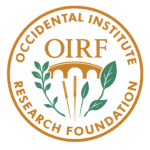Focal Point
Toxic Environment
Influence on Neurodegenerative Diseases
Pollutants can be found both in stimulants* as well as in the environment and even influence the onset of Parkinson’s disease. Nevertheless, by the correct application of detoxification therapy, Naturopaths can eliminate symptoms of the pollutant burden.
Christian Lent lasts 40 days, begins on Ash Wednesday and ends on Holy Saturday. Now, you can stand by the Christian faith as you wish: However, fasting and detoxifying once a year can hardly be wrong – especially with regard to the numerous pollutants lurking in many stimulants. In addition, there has been increasing evidence for years that such pollutants (but also environmental toxins, etc.) could possibly contribute to the onset of Parkinson’s disease. A background against which alternative practitioners can and should recommend themselves as real detoxification experts.
Many people occasionally rethink their own eating and enjoyment behaviour and practice abstinence: no alcohol, no sweets, fewer cigarettes. This is also a welcome opportunity for Naturopaths to convince open-minded patients of the advantages of individually coordinated detoxification therapy. Basically, detoxification therapy also makes sense from the point of view of many patients: for example, in spring or autumn to strengthen the immune system, following antibiotic treatment, accompanying dental restoration or after chemotherapy.
In this context, however, it should not be forgotten that detoxification therapy is not at all administered for everyone, indeed cannot be given to all. Even if one or the other women’s magazine may propagate it differently with superficial articles on the topic of detox, etc.: We know better. Ultimately, an appropriate therapy should be individually appropriate for the respective patient and, among other things, take into consideration both the patient’s medical history and personality. This also includes clarifying in advance which organs and/or systems should be encouraged to strengthen detoxification and which may not. Although the liver, kidneys, lungs, intestines, skin, blood and lymph have a detoxifying effect, this would not be advisable for every patient. If, for example, someone perhaps already suffers from acne, the role of the skin as a detoxification organ should be put into perspective, and [the patient should] not be detoxified through the skin at all so that additional skin impurities do not occur.
In addition to these skin impurities, other body odors, head pressure, as well as fatigue and changes in stool and urine texture come into consideration as side effects of detoxification, and which are not always avoidable. Not the least, in order to be able to control these and keep them as low as possible, a detoxification belongs in the hands of experienced alternative practitioners or Naturopathic doctors, who provide a concrete medication intake regimen taking into account all factors involved – even those that are often not recognizable at first glance. If necessary at the patient’s request, this can be supplemented by further detoxifying naturopathic measures such as bloodletting, Baunscheidt therapy, leeches, cantharide plasters [blister plasters, Spanish fly], bloody cupping, etc.
List of Toxins To Be Eliminated
But for whom is detoxification therapy generally considered? And when does it make sense? Basically, the first thing to be considered is that day by day we are exposed to numerous substances that are harmful to our health. More or less – whether we like it or not. The list of noxious agents called into question is long and makes it clear that you cannot avoid all of them, as the following overview shows:
- Environmental toxins: nitrate from manure in groundwater, exhaust gases, radiation exposure
- Nutrition: Preservatives, artificial flavors, flavor enhancers such as glutamate and colorants in ready meals, growth hormones as well as antibiotic and other drug residues in meat, heavy metals in fish, pesticides and insecticides in vegetables, sweeteners and hidden sugars in numerous foods, bisphenol A and phthalates in plastic-packaged foods, coffee, alcohol, tobacco, medications
- Cosmetics: plasticizers, aluminum and PEG derivatives (deodorants)
- Stress on the mouth and throat: periodontitis, root canal teeth, dead teeth, various fillings, different metals (alternating current), poor oral hygiene, chronic inflammation (periodontitis, sinusitis, tonsillitis)
- Domestic environment: Flooring (carpet, laminate, adhesives), furniture, paint, mite excrement, mould, radiation exposure (transmission masts, WiFi, DECT telephones)
- Professional environment: Toner dust from printers in the office
Just as broad as the sources of possible pollutants are the symptoms that can indicate a pollutant burden on the body, such as:
- Increased susceptibility to infections
- Fatigue
- Exhaustion
- Anorexia
- Loss of libido
- Nervousness
- Irritability
- Eczemas
- Allergies
- Insomnia
- Pain conditions of unknown cause
- Lack of concentration
For many pesticides, a direct toxic effect on the nervous system has been proven.
Parkinson’s Disease Because of Environmental Toxins?
According to the German Society of Neurology, Parkinson’s disease – in combination with certain genetic dispositions – could even be triggered by environmental toxins. For example, the increase in neurodegenerative diseases such as Parkinson’s disease in the recent past exceeded the numbers expected due to demographic change. Only a minority of them are genetically explainable. It is undisputed that particulate pollutants from the air and other environmental toxins have an effect on the nervous system. The role of the industrial solvent trichloroethylene (TCE) in the development of Parkinson’s disease has also been discussed for some time.
Only a few months ago, a corresponding publication was published(1). This new cohort study looked at over 340,000 U.S. veterans who were stationed at Camp Lejeune, North Carolina, for at least three months from 1975 to 1985. At that time, the drinking water had been contaminated with organic solvents. More than 70 times the permissible amount of TCE was detected. The evaluation of the medical records of the soldiers, who were now about 60 years old, showed that the risk of Parkinson’s disease was about 70 percent higher (prevalence 0.33 percent; OR 1.70; p<0.001) than in a comparison group of another camp without drinking water contamination (prevalence 0.21 percent). The Camp Lejeune veterans were also more likely to have symptoms that are known to precede the onset of the movement disorder.
In addition, other substances for which there is a concrete suspicion have recently been published. For example, current studies(2) provide an overview of the possible role of organophosphorus compounds (pesticides) in the development of neurodegenerative and neurological developmental disorders. It describes links with Parkinson’s disease, Alzheimer’s disease, attention deficit hyperactivity disorder (ADHD), autism, and other developmental neurotoxicities.
“The possible importance of pesticides for the increase in neurodegenerative diseases such as Parkinson’s is not sufficiently taken into account in the current Europe-wide discussion regarding the reduction of pesticide pollution and the glyphosate ban,” criticizes Prof. Dr. med. Daniela Berg from the Christian-Albrechts-University, Kiel. In fact, both with regard to glyphosate and also the “Sustainable Use Regulation” (SUR) of pesticides discussed in the EU’s Environment Committee on 24 October 2023, the primary focus mentioned is on protection of endangered species and the possible effects on cancer illnesses. The neurotoxic effects of pesticides have been known for a long time.
For many pesticides, a direct toxic effect on the nervous system has been proven. Thus also the for glyphosate, which contributes to changes in neurotransmitter concentrations in the nervous system and to a cell-damaging environment. Parkinson’s disease has been observed after both acute and chronic glyphosate exposure(3, 4). In addition to the direct toxic effect, possible indirect effects, for example via a change in the microbiome, must also be considered. In addition, genetic variations (so-called polymorphisms) influence individual susceptibility to neurotoxicity.
Experts suspect that a combination of genetic susceptibility, duration of exposure and intensity influences manganese induced neurotoxicity.
Manganese Is a Major Health Risk
In contrast to manganisum, the acute toxicity of manganese (Mn), which was seen more frequently in the past, the chronic-cumulative toxicity of lifelong low-dose exposure to Mn has not yet been sufficiently researched. A new work(see 5) summarizes the current knowledge on the long-term effects of Mn from epidemiological and experimental studies. It has been shown that in chronic low-threshold exposure (compared to acute exposure), Mn deposition also extends to brain regions such as the Substantia nigra. The typical motor Parkinson’s symptoms are caused by degeneration of dopaminergic neurons in the Substantia nigra. It is strongly suspected that a combination of exposure duration, intensity and genetic susceptibility influences Mn-induced neurotoxicity (mitochondrial dysfunction, neuroinflammation, oxidative stress and impaired protein homeostasis).
Previous studies have already shown that both long-term and short-term exposure to air pollutants may be associated with an increased risk of Parkinson’s disease, while there have been no statements on the effect of medium-term exposure. A retrospective observational study from China(6) now shows a statistically significant association between medium-term sulfur dioxide (SO2) exposure and Parkinson’s disease in almost 40,000 cases (over 2,191 days, 2014-2019). Thus the increase per 1 μg/m3 SO2 corresponds to an increase in monthly outpatient visits for Parkinson’s disease of 2.34 percent.
Interim Conclusion
The list of substances associated with typical biochemical features of Parkinson’s disease is long. Under it are particulate matter, pesticides, neurotoxic metals (such as manganese; but also lead, mercury, cadmium), and additionally microplastics and nanoparticles, mineral oils, chemical plasticizers, bisphenol A (BPA) and many more.
“All these studies provide indications that cannot be overlooked that environmental toxins can additionally increase the incidence of Parkinson’s disease, which may be an explanation for the disproportionate increase,” says Prof. Berg. “There is no doubt that in the future, politicians, but also each individual, will demand the minimization of corresponding exposures. Furthermore, there should be urgent investment in research that uncovers the connections between environmental toxins and neurodegenerative diseases such as Parkinson’s and clarifies the mechanisms that cause the disease.”
What We Can Do
Now back to the topic of detoxification in naturopathic practice. In my practice, I usually combine and prescribe the following four medications from Phönix Laboratorium:
- Silybum spag. (2 x 100 ml)
- Solidago spag. (2 x 100 ml)
- Thuja Lachesis spag. (1 x 100 ml)
- Urtica-Arsenicum spag. (1 x 100 ml)
The following dosage of the individual remedies must be adjusted individually. Thus for example, the dosage of Urtica-Arsenicum spag., which is primarily used to stimulate the detoxification activity of the skin and mucous membranes, should be halved if patients already suffer from skin impurities before the start of therapy.
Procedure
Silybum spag. (liver stimulation), Solidago spag. (bladder, kidneys and urinary tract) and Urtica-Arsenicum spag. (lymph) are taken in 3-day alternation, Thuja Lachesis spag. continuous. The resulting 9-day cycle is usually repeated 5 times. The concept lasts 45 days with the following dosage:
- Silybum splits: 180 drops
- Solidago spag.: 180 drops
- Urtica-Arsenicum spag.: 60 drops (only 30 drops for skin problems)
- Thuja Lachesis spag.: 60 drops
At least three liters of fluid per day should be added to accompany the medication.
Application
For the sake of practicality, the daily dose of the respective medicines can be drizzled into 1.5 litres of still water in the morning and drunk throughout the day (do not use metal spoons or containers). Accompanying this, I recommend a sufficient fluid intake of at least three liters per day.
Injections of Metahepat (Meta Fackler Arzneimittel) may also be considered: a complex homeopathic containing Berberis vulgaris (sour thorn, barberry), Carduus marianus (milk thistle), Chelidonium (celandine), Fel tauri depuratum (purified bovine bile), Flor de piedra (stone flower), Phosphorus (phosphorus), Picrasma excelsa, Quassia amara (quassia wood) and Stannum metallicum (tin). The indications are disorders of the liver-gall bladder system and indigestion. The following dosage is recommended: one ampoule daily i.c., s.c., i.m. or (slowly) i.v. A similar preparation with the same indication and from the same manufacturer is also metaheptachol n. However, these are drops that should be taken as follows: 1 to 3 times a day, five to ten drops.
Nobody knows exactly what the individual pollutant burden of the individual looks like.
Result
Even if, as described at the beginning, there is no such thing as elimination for everything and everyone, this method represents a pragmatic possibility to approach the topic of elimination without getting lost in the numerous details. Especially since no one – neither naturopaths nor patients – knows exactly what the individual pollutant burden of the individual looks like. In addition, I find it is generally good if several forthcoming organs in question are used for detoxification.

An Exclusive Translated Article for P2P Supporters
From the monthly publications of P2P
Published June 2025
From an article in Naturheilpraxis, Volume 78, May 2025
Translation & redaction by: Carolyn L. Winsor, P2P Consulting
© Copyright 2025, raum&zeit, Johannes Steinbach, Germany
Digital and online translation assistance utilized.
Literature
The complete list of references can be requested from the publisher.
Translator Note:
* “Genussmittel” is a German word that translates literally to “luxury foods” or “stimulants” in English. It refers to items consumed primarily for pleasure rather than for sustenance. Examples include alcohol, tobacco, coffee, chocolate, and spices.



